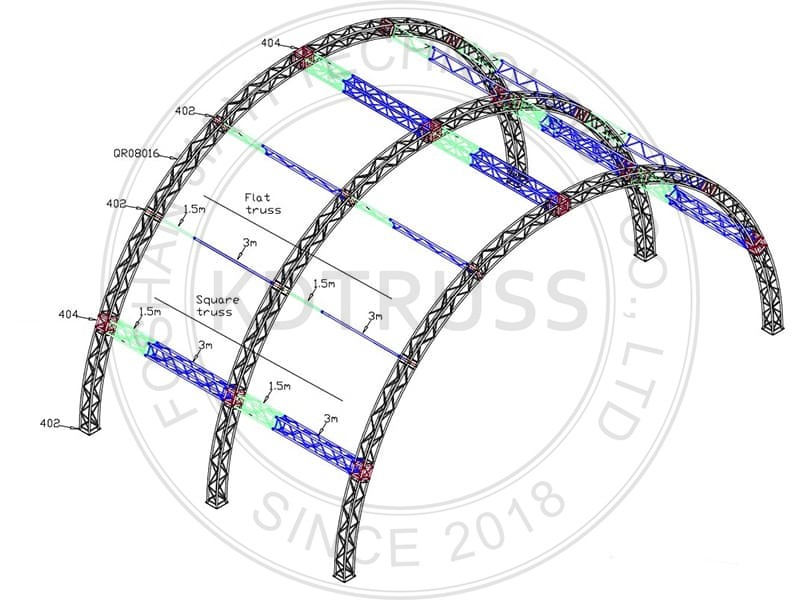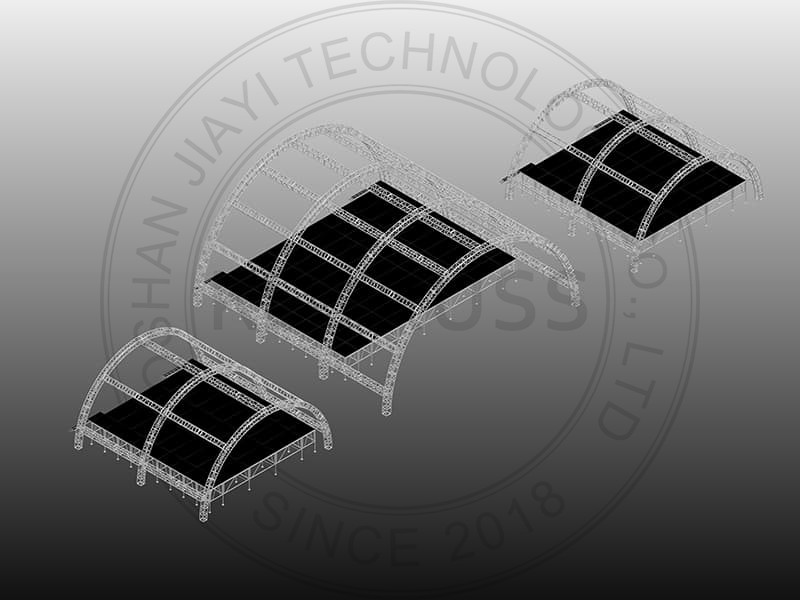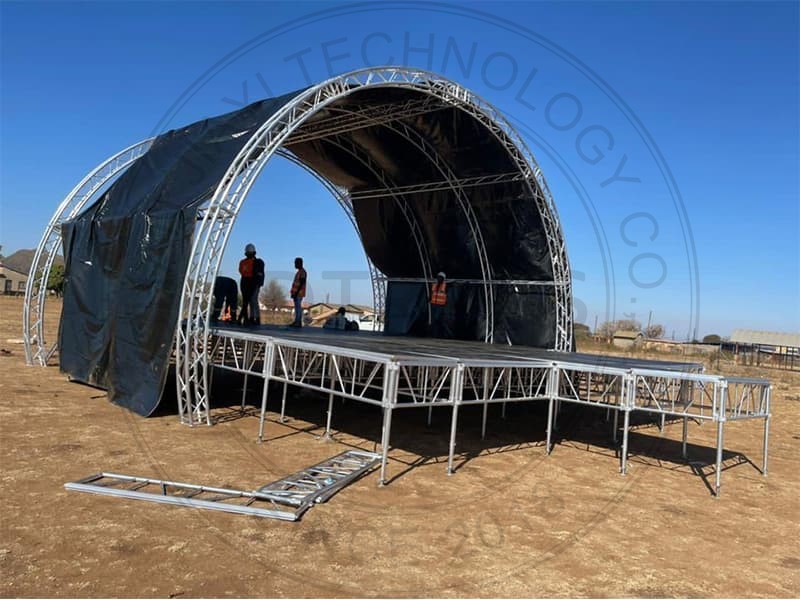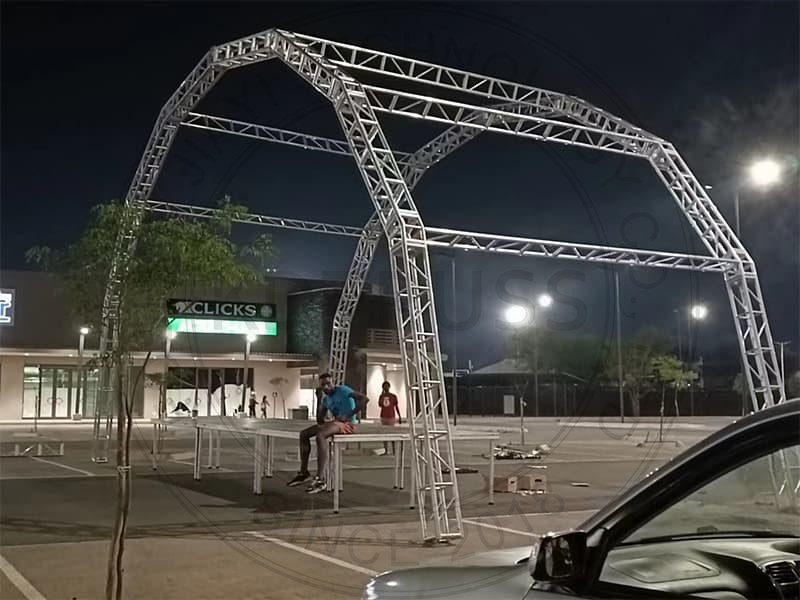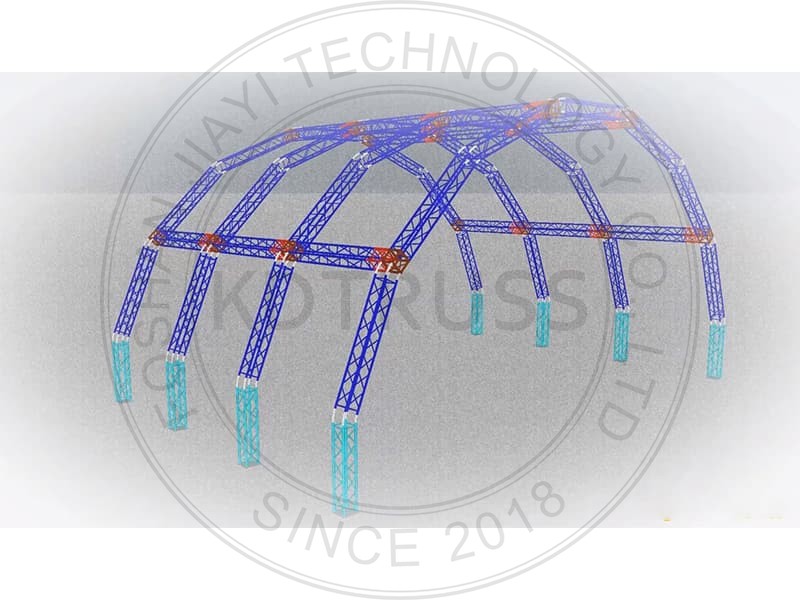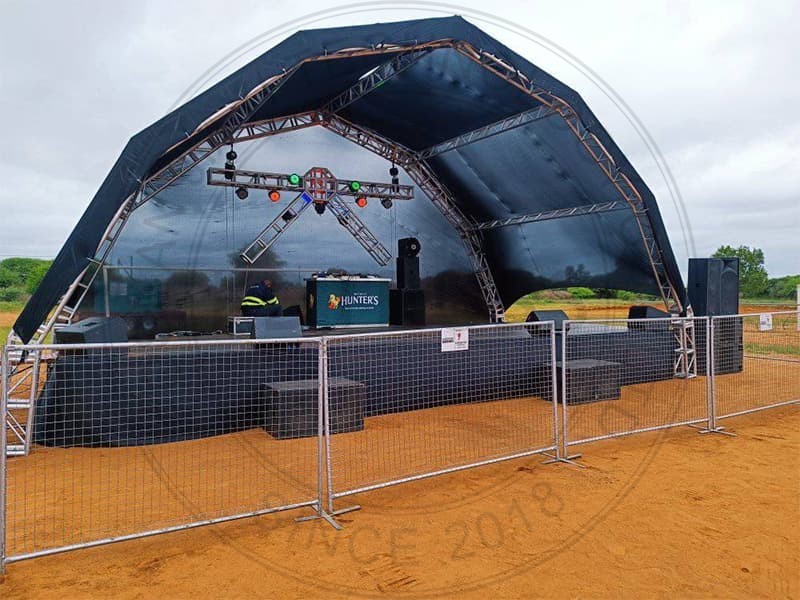What Are You Looking For?
A Dome Roof Truss Structure System refers to a design approach that creates a roof with a curved or domed shape using trusses. A dome is a geometric form consisting of an arched surface that curves inward or outward in a symmetrical manner. The dome roof truss structure system employs specially designed trusses to support and distribute the load of the roof while creating the desired curved shape.
Here are the key components and features of a dome roof truss structure system:
Trusses: The primary elements of the system are the trusses, which are structural frameworks typically made of steel or timber. Trusses are designed to carry and transfer loads to the supporting walls or columns. In the case of a dome roof, the trusses are engineered to create the curved shape of the roof.
Curved members: The members of the trusses are curved to match the desired shape of the dome. These curved members include the top and bottom chords, as well as the diagonals and verticals that provide stability and distribute the load throughout the structure.
Nodes and connectors: The intersections of the truss members are called nodes. Nodes are usually connected using various connectors like plates, bolts, or welds to ensure the stability and integrity of the truss system. In dome roof trusses, the nodes play a crucial role in maintaining the curvature and shape of the roof.
Load distribution: The curved shape of the dome roof truss system helps distribute the weight of the roof evenly, minimizing the stress on individual components. The design allows for efficient load transfer to the supporting walls or columns, resulting in a structurally sound and stable roof.
Architectural versatility: Dome roof truss structures offer architectural versatility and aesthetic appeal. The curved shape can create a visually striking and unique design for various types of buildings, including sports stadiums, exhibition centers, theatres, museums, and religious structures.
Spanning capability: Dome roof truss systems are often used in large-span structures where the ability to span long distances without intermediate support is required. The curved shape provides inherent structural strength, allowing for wide open spaces beneath the roof.
Structural analysis and engineering: Designing a dome roof truss system requires sophisticated structural analysis and engineering calculations to ensure the trusses can support the anticipated loads and forces. The geometry, materials, and connections all need to be considered to ensure the stability and structural integrity of the roof.
Dome roof truss structures can offer an attractive alternative to conventional roof structures, providing unique architectural aesthetics and efficient load-bearing capabilities. However, it's important to consult with professional structural engineers and architects during the design process to ensure the safety and functionality of the roof system.
